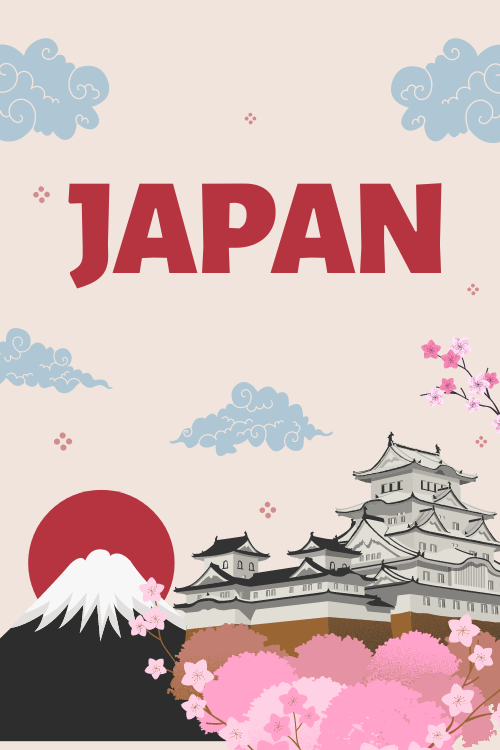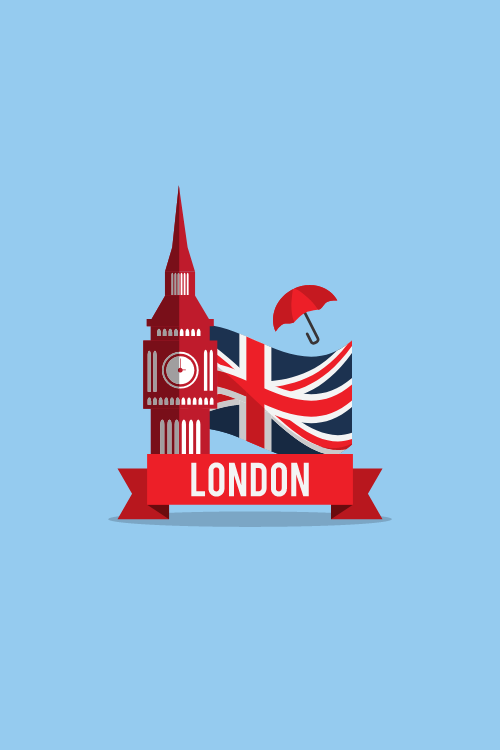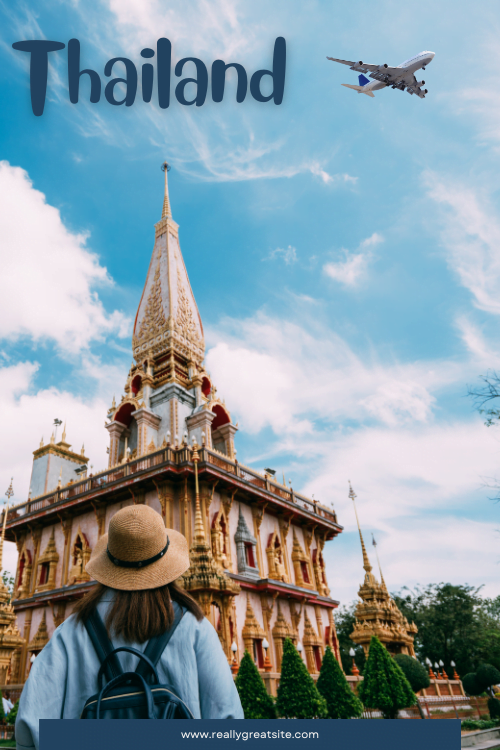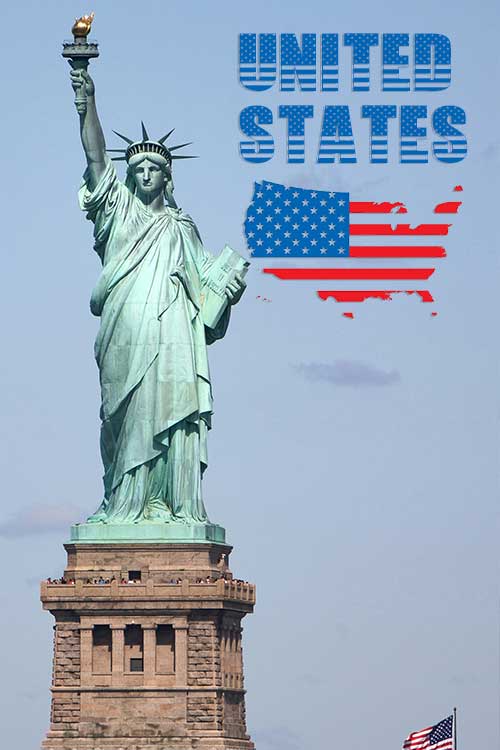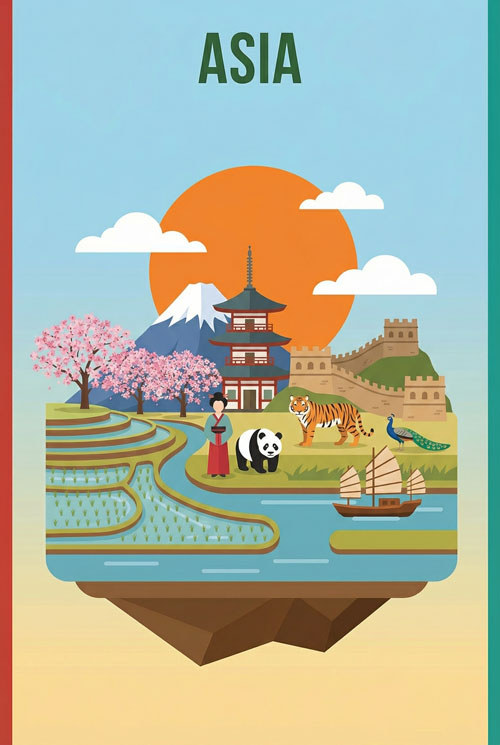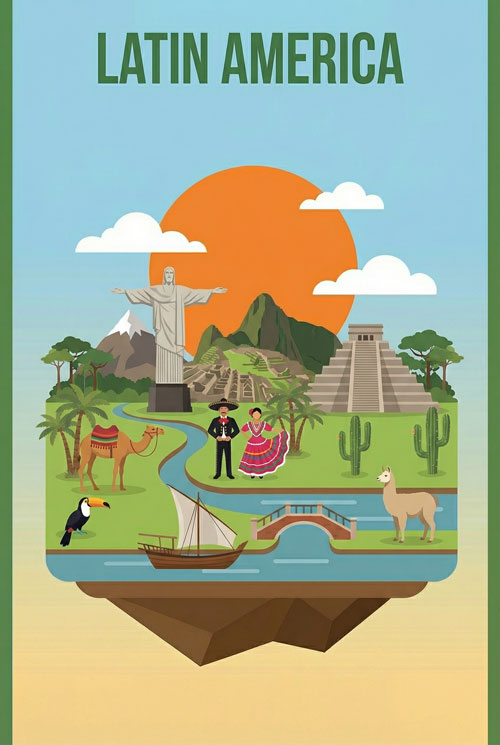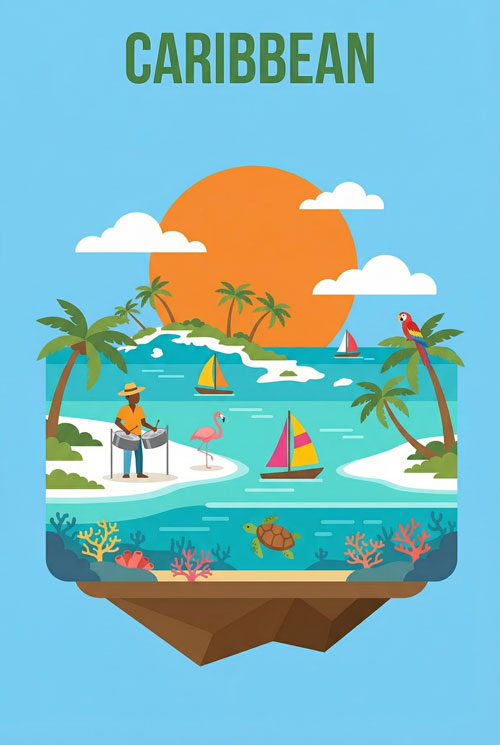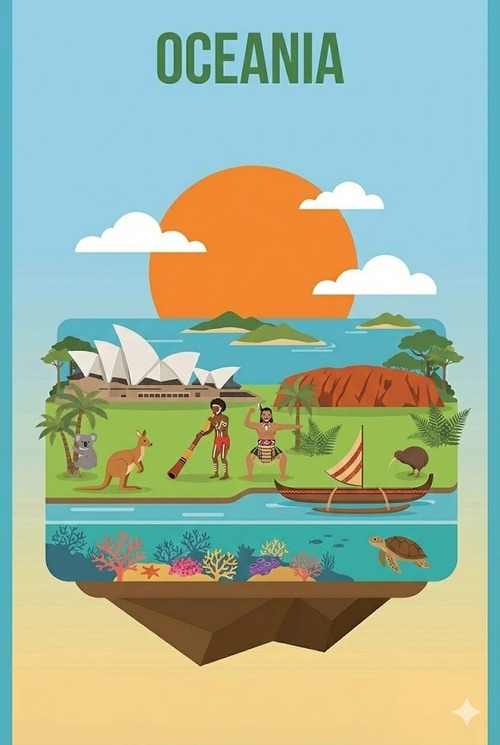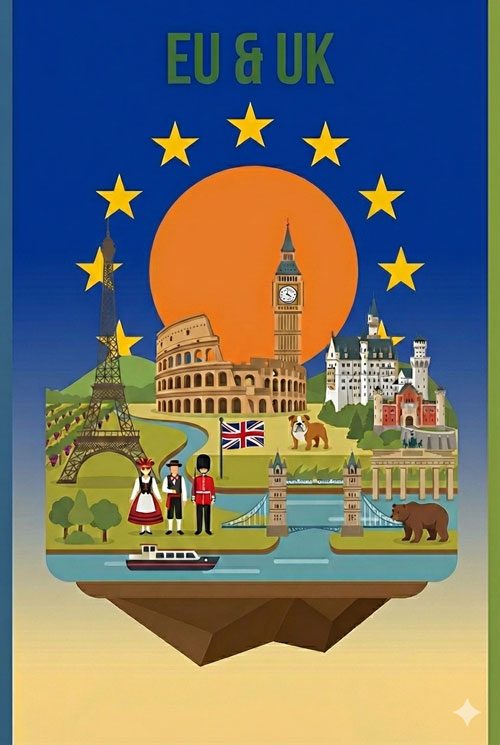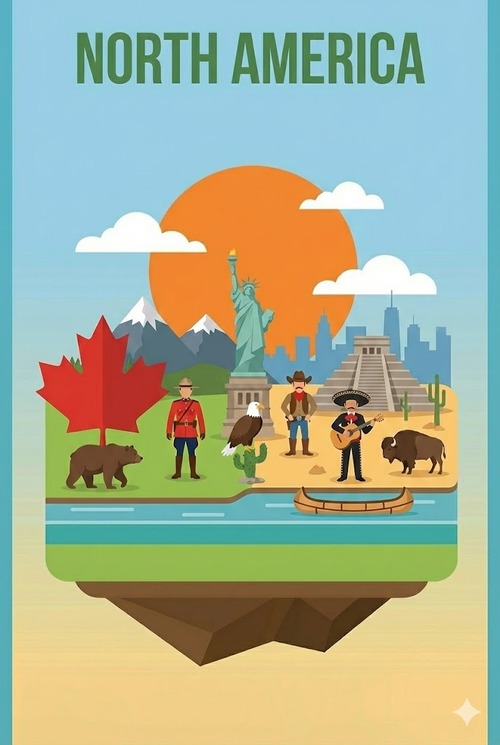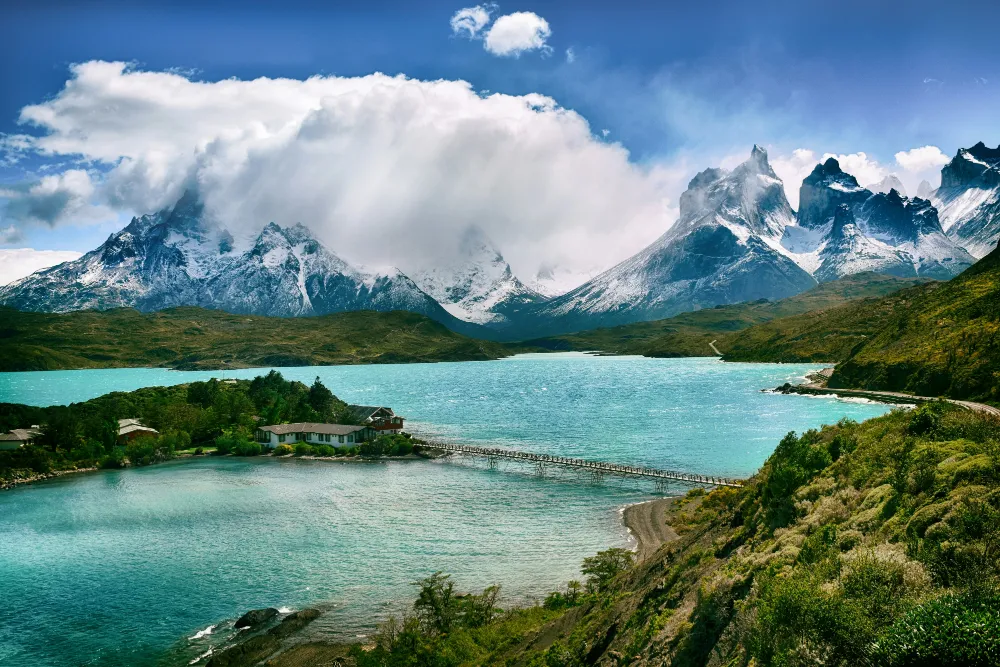Travel Guide
Chile Travel Guide: Everything You Need To Know
Chile is stunning. Imagine a country stretching over 4,300 kilometers, squeezed between the massive Andes mountains and the vast Pacific Ocean. This means you get incredible variety. Up north, you’ll find the Atacama Desert, the driest place on Earth (outside the poles!), with landscapes that look like Mars. Head south, and you’re in Patagonia, a land of sharp, icy peaks, huge glaciers, and wild beauty. In between? Fertile valleys perfect for growing grapes (hello, Chilean wine!), bustling cities like Santiago, and colorful coastal towns like Valparaíso.
Planning a trip? This guide is your friend. It cuts through the noise to give you everything you truly need – from understanding the different regions and climates to figuring out the best time to go, budgeting, staying safe, getting around, and finding those can’t-miss spots. Get ready for an amazing adventure.
Planning Your Chilean Adventure: Must-Know Info Before You Go
Let’s get you prepped for Chile. Knowing a bit about the country makes your trip smoother and way more rewarding.
What Makes Chile Tick? (Geography & Climate)
Chile’s long, skinny shape is key. It creates dramatically different climate zones.
- North (Atacama): Think extreme dryness. Hot days, often cold nights. Minimal rain. This unique climate creates those famous desert landscapes.
- Central (Santiago, Valparaíso, Wine Valleys): Mediterranean climate here. Warm, dry summers (December-February) and mild, wetter winters (June-August). Perfect for city exploring and vineyard visits.
- Lake District (Pucón, Puerto Varas): More temperate, often rainy. Lush forests, stunning lakes, snow-capped volcanoes. Pleasant summers, cool and wet winters.
- South (Patagonia): Colder, windier, and unpredictable. Expect dramatic weather shifts, glaciers, and rugged terrain. Summer (December-February) has the mildest weather and longest days.
Understanding this is vital for packing. You’ll likely need different gear if you’re hitting both the desert and Patagonia. It also means travel times between regions can be long, so factor that into your plans.
A Glimpse into Chile’s Story (History & Culture)
Chile’s past is a fascinating mix. Indigenous groups lived here long before the Spanish arrived in the 1500s. Spanish colonization left a big mark – you’ll see it in the language, religion, and architecture, especially in cities like Santiago with its grand old buildings alongside modern ones. Chile fought for independence in the early 1800s, and its journey since then has shaped the unique culture you see today. It’s a blend of European and indigenous roots, visible in art, music, food, and daily life. Knowing even a little bit about this history adds depth to seeing places like the Plaza de Armas in Santiago or the historic port of Valparaíso. It helps you appreciate things on a different level.
Connecting with Locals (People & Language)
Most Chileans live in the central region, especially around Santiago. Spanish is the official language. Now, Chilean Spanish has its own rhythm – it’s often spoken quickly and has unique slang.
Don’t let that scare you! Learning a few basic Spanish phrases goes a long way. Simple things like “Hola” (Hello), “Gracias” (Thank you), and “Por favor” (Please) show respect and can make interactions much smoother. While you’ll find English speakers in hotels and tourist spots, stepping outside those zones might require a little Spanish. It makes your trip more immersive.
Getting Around & Staying Comfy (Economy & Infrastructure)
Chile has one of South America’s more developed economies. This translates to pretty good infrastructure, especially in the central and northern areas. Roads are generally well-maintained, domestic flights connect major cities, and the long-distance bus system is extensive and reliable. You’ll find good tourist facilities in popular areas.
However, if you venture into really remote parts, like stretches of the Carretera Austral in Patagonia, expect things to be more basic. Overall, Chile offers a relatively comfortable travel experience infrastructure-wise.
Handling the Essentials: Practical Planning
Okay, let’s talk practical stuff. Getting these details right makes your trip stress-free.
Smooth Sailing: Visa and Entry Explained
Good news for many travelers! People from the US, Canada, the UK, Australia, New Zealand, and most EU countries usually don’t need a visa for tourist stays up to 90 days.
But always double-check! Visa rules can change. Check the official Chilean government website or your country’s embassy/consulate website well before you travel. Don’t rely on second-hand info. Make sure your passport is valid for at least six months beyond your planned stay.
Unlock Chile’s Wonders: Best Time to Visit
When should you go? It really depends on where you’re going in Chile.
Here’s a quick breakdown:
| Region | Best Months to Visit | Key Considerations |
|---|---|---|
| North (Atacama) | Year-round | Hot days, cold nights. Clearest skies for stargazing. |
| Central Chile | September – May | Pleasant temps for cities & wine regions. Avoid mid-winter. |
| Lake District | September – April | Warmer, good for hiking. Can be rainy anytime. |
| Patagonia | December – February | Mildest weather, longest days. Peak season – book early! |
| Easter Island | March-May, Sep-Nov | Good temps, fewer crowds than peak summer. |
- Summer (Dec-Feb): Best for Patagonia & beaches. It’s peak season, so expect crowds and higher prices. Book flights and popular accommodations (like in Torres del Paine) far in advance.
- Shoulder Seasons (Spring: Sep-Nov, Autumn: Mar-May): Often the sweet spot! Good weather in many regions, fewer crowds, potentially lower prices. Great for Central Chile, the Lake District, and even the fringes of the Patagonian season.
- Winter (Jun-Aug): Ideal for skiing near Santiago. Central Chile can be cool and wet. Patagonia is very cold, windy, and many things shut down. Atacama is still visitable but nights are freezing.
Think about what you want to do and prioritise that region’s best season.
Budgeting Wisely: How Much Will Chile Cost?
Let’s talk money. Chile is generally considered one of the more expensive countries in South America, but you can definitely travel on different budgets. Costs vary a lot depending on where you go and your travel style. Patagonia and Easter Island are typically pricier than Santiago or Valparaíso.
Here are some rough daily estimates (per person, in Chilean Pesos – CLP) to give you an idea:
| Travel Style | Accommodation (CLP) | Food (CLP) | Transport (CLP) | Activities (CLP) | Est. Daily Total (CLP) | Approx. USD (check current rates!) |
|---|---|---|---|---|---|---|
| Backpacker | 10,000 – 15,000 | 8,000 | 8,000 | 5,000 | 36,000 | ~$40 USD |
| Midrange | 30,000 – 50,000 | 25,000 | 25,000 | 25,000 | 105,000 | ~$115 USD |
| Upscale | 80,000+ | 50,000+ | 40,000+ | 35,000+ | 205,000+ | ~$225+ USD |
(Exchange rates fluctuate! Use these as a general guide.)
- Accommodation: Hostels offer dorm beds, while hotels range from basic to luxury. Airbnb is also an option.
- Food: Eating at local markets or simple restaurants (“picadas”) saves money. Cooking some meals yourself helps too.
- Transport: Long-distance buses are budget-friendly. Domestic flights save time but cost more. Renting a car adds flexibility but increases costs significantly.
- Activities: Big tours (like Torres del Paine treks or Atacama excursions) can be a major part of your budget. Factor these in specifically.
Plan your budget based on your priorities. Are you focused on experiences? Splurge on tours. Prefer comfy stays? Allocate more for accommodation.
Staying Safe and Healthy on Your Trip
Chile is widely considered one of the safest countries in South America. Violent crime against tourists is rare. However, petty theft (like pickpocketing or bag snatching) can happen, especially in crowded areas, bus stations, and popular tourist spots in Santiago and Valparaíso.
- Be aware of your surroundings.
- Keep valuables secure and out of sight. Don’t flash expensive gear.
- Use hotel safes for passports and extra cash.
- Be cautious on overnight buses.
- Trust your gut. If a situation feels off, leave.
Health:
- Talk to your doctor 4-6 weeks before your trip about recommended vaccinations.
- Tap water is generally safe to drink in major cities, but it has a high mineral content that can upset some stomachs. Consider using a filtered water bottle or buying bottled water, especially when you first arrive or in rural areas.
- Sun protection is crucial, especially in the Atacama Desert and Patagonia (ozone layer is thinner). Use high-SPF sunscreen, wear a hat, and sunglasses.
- Altitude sickness can be an issue in the Atacama (San Pedro is at ~2,400m / 7,900ft, and some tours go much higher). Ascend gradually, stay hydrated, avoid alcohol, and take it easy for the first day or two.
Get Connected: SIM Cards, eSIMs, and Wi-Fi
Staying connected is pretty easy in Chile. You have a few options:
- Local Physical SIM Card: You can buy a prepaid SIM card from providers like Entel, Movistar, or Claro upon arrival (airport kiosks, phone stores). This usually gives you good local rates for data and calls. Pro: Often cheap for data. Con: Need to find a store, swap your SIM (if your phone isn’t dual-SIM), might involve a language barrier during purchase/activation. Best for longer stays or budget-focused travelers with unlocked phones.
- Wi-Fi: Widely available in hotels, hostels, cafés, and restaurants in towns and cities. Pro: Free. Con: Not available everywhere (especially remote areas), connection quality varies, potential security risks on public networks. Good for casual use but not reliable for constant connectivity.
- eSIM (Embedded SIM): A digital SIM card built into newer smartphones (most iPhones since XS, Google Pixels, newer Samsungs). You can buy a data plan online before you even leave home. This is often the most convenient option.
- Pros: Super convenient setup (often just scanning a QR code), activate upon arrival, keep your home SIM for calls/texts, easily manage plans online, avoid roaming charges. Some providers like eSIM4 offer plans that auto-connect to local networks as soon as you land, taking the hassle out of finding connectivity. They also offer 24/7 support if you run into issues.
- Cons: Your phone must be eSIM compatible and unlocked. Can sometimes be slightly more expensive than a local SIM if you use massive amounts of data, though often very competitive for typical tourist usage.
- Use Case: Perfect for travelers who value convenience, want data immediately upon arrival, have compatible phones, are on shorter trips, or visit multiple countries. Companies like eSIM4 offer plans for Chile and over 200 other countries, often with helpful apps to manage your data (check specific Chile plans here).
Which is best for you? If your phone supports eSIM and you prioritize ease and instant connectivity upon arrival, an eSIM is likely your best bet. If you’re on a very tight budget, staying long-term, and don’t mind finding a local store, a physical SIM might save a few dollars. Relying solely on Wi-Fi is possible but can be limiting.
Smart Packing: What to Bring for Chile’s Variety
Packing for Chile means packing for multiple climates. Layers are your best friend.
- Essentials (All Regions):
- Comfortable walking shoes (broken in!)
- Sunscreen (high SPF), sunglasses, hat
- Reusable water bottle
- Basic first-aid kit & personal medications
- Power adapter (Chile uses Type C & L plugs, 220V) & potentially a portable power bank
- Copies of important documents (passport, visa if needed)
- For Atacama: Lightweight, breathable clothing for day, warm layers (fleece, insulated jacket) for cold nights/early mornings, lip balm (it’s DRY!).
- For Central Chile: Comfortable city clothes, layers (t-shirts, long sleeves, light jacket/sweater), maybe slightly dressier outfits for Santiago nightlife/restaurants.
- For Lake District/Patagonia:
- Waterproof and windproof outer jacket (essential!)
- Water-resistant pants
- Warm layers (fleece, thermal underwear)
- Warm hat, gloves, scarf
- Sturdy, waterproof hiking boots if trekking
- Consider: Binoculars (wildlife), travel towel, Spanish phrasebook/app.
Pack smart, not heavy. You can often buy specific gear (like extra warm layers) in cities like Santiago or Puerto Natales if needed.
Navigating the Long Land: Getting Around Chile
Chile is long! Getting between regions efficiently is key to maximizing your time.
Flying High: Domestic Flights
For covering large distances quickly (e.g., Santiago to Atacama or Patagonia), flying is the way to go. Airlines like LATAM, Sky Airline, and JetSMART operate domestic routes.
- Pros: Fastest way to travel long distances.
- Cons: Most expensive option. Baggage fees can add up on budget airlines.
- Tip: Book flights well in advance, especially for peak season travel to popular destinations like Calama (for Atacama) or Punta Arenas/Puerto Natales (for Patagonia), to get better prices.
Hitting the Road: Buses
Chile has an excellent, comfortable, and reliable long-distance bus network. Companies like Turbus and Pullman Bus are major players. Buses are a popular and affordable way to travel between cities.
- Pros: Extensive network, affordable, comfortable options available (semi-cama/cama seats recline significantly). Great for seeing the landscape.
- Cons: Slower than flying for long distances. Overnight journeys can be tiring.
- Tip: Book bus tickets online in advance, especially for popular routes or holidays. Different seat classes offer varying levels of comfort – ‘cama’ (bed) or ‘salon cama’ (premium bed) are worth it for long overnight trips.
Your Own Wheels: Car Rental
Renting a car gives you ultimate flexibility, especially for exploring regions like the Lake District or parts of the Carretera Austral at your own pace.
- Pros: Freedom and flexibility. Access to off-the-beaten-path spots.
- Cons: Can be expensive (rental cost, fuel, tolls). Driving in Santiago can be hectic. A 4×4 might be needed for some remote roads (like parts of Carretera Austral). An International Driving Permit (IDP) is often recommended alongside your home license.
- Tip: Compare prices online. Check insurance coverage carefully. Roads are generally good on main highways, but conditions vary elsewhere.
Other Ways to Move: Trains, Ferries, Colectivos
- Trains: Passenger train services are limited, mainly operating short routes in the central region. Not a primary mode for long-distance travel.
- Ferries: Essential for reaching islands like Chiloé and navigating parts of Patagonia’s fjords. Book ahead for popular routes, especially vehicle spots.
- Colectivos: Shared taxis running fixed routes within cities and towns. Cheaper than regular taxis, faster than local buses. Look for cars with numbers on the roof.
Unveiling Chile’s Treasures: Regions and Destinations
Chile’s regions offer wildly different experiences. Here’s a taste of what awaits:
Northern Chile: Desert Dunes and Starry Skies
- The Atacama Desert: Prepare to be amazed. This is a land of stark, stunning beauty.
- San Pedro de Atacama: The main tourist hub, a charming adobe town. Base yourself here for tours.
- Must-Sees: Valle de la Luna (Moon Valley) & Valle de la Muerte (Death Valley) for surreal landscapes, especially at sunset. El Tatio Geysers (go at sunrise!). High-altitude lagoons (Miscanti, Miñiques) with flamingos. Vast salt flats (Salar de Atacama).
- Stargazing: Atacama offers some of the clearest night skies on Earth. Don’t miss a stargazing tour.
- Tip: Acclimatize to the altitude. Drink lots of water. Book tours in advance, especially in peak season.
- Other North: Coastal cities like Arica and Iquique offer beaches and history.
Central Chile: City Buzz, Coastal Charm, and Fine Wine
- Santiago: The energetic capital. A mix of history and modernity against an Andean backdrop.
- Highlights: Plaza de Armas (main square), Metropolitan Cathedral, climbing Cerro San Cristóbal for epic views (take the funicular!), exploring the hip Bellavista neighborhood (Pablo Neruda’s house, La Chascona, is here), world-class museums (Museo Chileno de Arte Precolombino is excellent). Great food scene.
- Valparaíso & Viña del Mar:
- Valparaíso: A UNESCO World Heritage port city. Famous for its steep hills covered in colorful houses, vibrant street art, and old funicular elevators (‘ascensores’). Bohemian, gritty, and captivating.
- Viña del Mar: “Valpo’s” more polished neighbor. A popular beach resort town with gardens and a more relaxed vibe. Easily visited together as a day trip or overnight from Santiago.
- The Wine Regions: Chile is world-famous for wine!
- Maipo Valley: Close to Santiago, known for excellent Cabernet Sauvignon. Easy day trip.
- Colchagua Valley: Further south, renowned for Carmenère and other reds. Stunning scenery. Stay overnight for the full experience. Many wineries offer tours and tastings.
The Lake District: Volcanoes, Forests, and Adventure
A region of jaw-dropping natural beauty. Think snow-capped volcanoes reflecting in pristine lakes, surrounded by lush forests.
- Pucón: The adventure capital. Base yourself here for hiking (including climbing Villarrica Volcano – requires a guide!), white-water rafting, kayaking, hot springs, and exploring Huerquehue National Park.
- Puerto Varas: Charming town with German-influenced architecture on Lake Llanquihue, facing the stunning Osorno Volcano. Great base for exploring Vicente Pérez Rosales National Park (home to Petrohué Falls).
- Chiloé Island: Unique culture, mythology, and architecture. Famous for its UNESCO-listed wooden churches and colorful ‘palafitos’ (stilt houses). Slower pace, distinct cuisine (try Curanto!). Accessible by ferry.
Patagonia: Wild, Windswept, and Wonderful
The crown jewel for many adventure travelers. Expect dramatic landscapes and untamed wilderness.
- Torres del Paine National Park: World-renowned for hiking. Iconic granite peaks (the ‘Towers’), glacial lakes, glaciers, and abundant wildlife (guanacos, condors, maybe even pumas).
- Hiking: The famous ‘W Trek’ (4-5 days) or the longer ‘O Circuit’ (8-10 days). Day hikes are also possible. Permits and campsite/refugio bookings are essential and must be done months in advance, especially for the W or O during peak season (Dec-Feb).
- Gateway Town: Puerto Natales is the main base for park access and organizing tours/gear rental.
- The Carretera Austral (Southern Highway): An epic road trip through remote, stunning Patagonian scenery – glaciers, fjords, rainforests. Requires more planning and often a 4×4. Parts involve ferry crossings. Pure adventure.
- Chilean Fjords & Glaciers: Explore via expedition cruises departing from Punta Arenas or Puerto Montt for incredible glacier viewings and remote wilderness access.
- Punta Arenas: Southernmost major city. Gateway to Antarctica and penguin colonies (like Magdalena Island – seasonal).
Remote Islands: Mysteries in the Pacific
- Easter Island (Rapa Nui): Thousands of miles off the coast, this Polynesian island is famous for its mysterious Moai statues. Explore archaeological sites, volcanic craters, and unique culture. It’s a trip back in time. Requires a flight from Santiago. Expensive, but unforgettable.
Making the Most of It: Activities and Interests
Chile caters to almost every interest:
- Adventure: Hiking/trekking (everywhere!), volcano climbing (Lake District), white-water rafting (Lake District), surfing (Pichilemu), skiing/snowboarding (near Santiago, winter), kayaking, glacier hiking (Patagonia).
- Wildlife: Penguin spotting (Patagonia, Chiloé), whale watching (seasonal, coast), flamingo spotting (Atacama), guanaco/vicuña viewing (Atacama, Patagonia), birdwatching (diverse species nationwide). Torres del Paine is great for potential puma sightings (with a guide).
- Culture & History: Museums in Santiago, Valparaíso’s street art and history, indigenous culture exploration, colonial architecture, visiting wineries, exploring Easter Island’s archaeological sites.
- Food & Drink: Trying local specialties (empanadas, ceviche, pastel de choclo, cazuela, curanto), fresh seafood, Pisco Sours (the national cocktail!), and of course, sampling world-class Chilean wine. Food tours and cooking classes are great options.
- Relaxation: Soaking in thermal hot springs (Lake District), relaxing on beaches (Viña del Mar, central coast), enjoying the laid-back vibe in smaller towns.
- Stargazing: A highlight in the Atacama Desert. Several professional observatories offer tours, but even just looking up on a clear night is incredible.
Final Pocket Tips for Your Chilean Journey
A few last helpful pointers:
- Travel Responsibly: Respect local customs and traditions. Support local businesses (buy souvenirs from artisans, eat at local restaurants). Minimize your environmental impact – stick to trails, don’t feed wildlife, reduce plastic use. Leave places better than you found them.
- Money Matters: The currency is the Chilean Peso (CLP). Credit cards are widely accepted in cities and tourist areas, but always carry some cash (pesos) for smaller shops, markets, local buses, and remote areas. ATMs are common in towns. Tipping around 10% is customary in restaurants (check if ‘propina’ is already included).
- Stay Safe Reminders: Be aware of your belongings, especially in crowds. Use hotel safes. Avoid walking alone late at night in unfamiliar areas. Get travel insurance!
- Basic Spanish Helps:
- Hola = Hello
- Gracias = Thank you
- Por favor = Please
- De nada = You’re welcome
- Perdón / Disculpe = Excuse me / Sorry
- ¿Cuánto cuesta? = How much does it cost?
- No entiendo = I don’t understand
- ¿Habla inglés? = Do you speak English?
- Baño = Bathroom
- Emergency Contacts: Know the number for local police (133), ambulance (131), and fire department (132). Also, have the contact info for your country’s embassy or consulate in Chile easily accessible.
Embrace the Amazing Diversity of Chile
Chile is more than just a destination; it’s an experience that stretches across incredible extremes. From the sun-baked deserts of the north to the icy wilderness of the south, with vibrant city life, world-class wine, and ancient mysteries scattered in between, it truly offers something for every type of traveler.
Planning is key to unlocking Chile’s wonders. By understanding its regions, preparing for the practicalities, and choosing how you want to explore, you set yourself up for a journey filled with awe and adventure. Whether you’re trekking past granite giants in Patagonia, stargazing in the Atacama, wandering the colorful hills of Valparaíso, or sipping Carmenère in a sun-drenched vineyard, Chile promises memories that will stick with you long after you’ve returned home.

